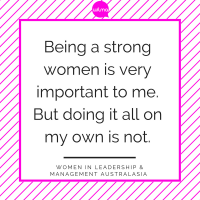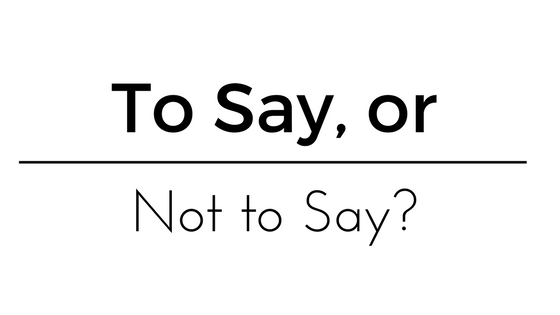Men think women are holding themselves back
With all of the talk and ongoing debate about women in leadership, we decided it was time to take a closer look at what is really going on in Australia. So we surveyed 1,000 men and women about their attitudes to work, leadership and their real feelings behind women moving up the ladder.
Some of the results of the research — a combination of online questionnaires and offline interviews conducted with working professionals — were as we thought they would be. But some were quite shocking, even to us.
The Australian Pulse of Women in Leadership found Australian men believe women are failing to make the move into leadership roles because they have difficulty juggling work/life commitments, lack qualifications and are less ambitious.
Sixty two per cent of men want to see more women in leadership, yet almost three quarters of those same men believe there is a level playing field in the workplace, and that women have the same opportunities they do to move into leadership positions.
Meanwhile, the survey found only 35% of women believe they have the same career opportunities as their male counterparts – a massive disconnect about the realities women perceive as they show up at work each day.
The pressure of having to fit into traditional models of leadership that don’t serve the, well is also having an effect on productivity and women’s wellbeing, with 85% of Australian businesswomen saying they are just functioning, rather than flourishing in their career.
With burnout an ever present risk for working women, whether they are parents or not, having such a large percentage of women just getting through the day, but not thriving in it, should be a significant wake-up call for employers and women everywhere.
One of the few survey results where men and women saw eye to eye was on the proposition that Australian businesses would benefit if there were more women in leadership positions. Organisations both here in Australia and around the world are finally coming to understand the bottom-line value of feminine traits – such as openness, empathy, collaboration, flexibility and patience – to improve engagement and productivity in our workplaces.
KPMG economists that help employees to feel more motivated, supported and appreciated could be worth up to$305 billion annual in productivity gains for our economy.
Interestingly, out of all of the suggested approaches to address the leadership imbalance, the Pulse found men and women strongly agreed that quotas were the least preferred method to create more female leadership opportunities.
What we know for sure from our work and from these results is that it’s time for a new conversation. This is not about which gender makes better leaders, and it’s time we evolved from trying to ‘fix the women’ or stamp out gender bias in men.
Instead Australian businesses need to embrace the emerging concept of gender intelligence, which means understanding the unique qualities both men and women bring to the leadership table and collectively harnessing these for the greater good.
And businesses need to get serious about embracing feminine leadership traits that people the world over, including in Australia, are screaming for in their leaders.
So what can women do? As a start, try these five tips for embracing female leadership traits at work today.
Five tips for embracing female leadership traits
- Invest in kindness. Improve the mood of your business by performing at least five kind acts a day.
- Develop people’s strengths. Get to know your staff and discover what people like doing. Use this to craft their jobs, arrange training and provide feedback around these strengths.
- Value appreciation. Genuinely thank one person each day for making your job easier or more enjoyable and be specific about what they did that you appreciated to lower stress around the office.
- Cultivate meaning. Give your leaders a sense of purpose by having them clearly define their behavior and the goal they wish to achieve, for example: Everything I do is to ensure my team members feel supported at work, so they are more satisfied in their job and more productive
- Ignite hope. Reduce negativity by empowering staff to feel confident in challenging the insecurities and beliefs that may be holding them back: “Is that the only explanation for what’s unfolding?”
This article was originally published on Women’s Agenda May 22nd 2014 Read the original article
What glass ceiling? Businessmen blame women for limiting themselves at work
AUSTRALIAN businessmen believe women are to blame for their lack of advancement in the workforce because they fail to make the most of the opportunities presented to them.
A study released today of 1000 male and female professionals will find 60 per cent of Australian businessmen believe women have the same career opportunities they do – but don’t take full advantage of them.
Only 35 per cent of women believed they had the same career opportunities as their male counterparts.
The Australian Pulse of Women in Leadership study will also find that men believe women do not move into leadership roles because they struggle to balance work/life, lack qualifications and are less ambitious than men.
“We were very surprised at that discrepancy between what women and men think – for 60 per cent of Australian businessmen to think there are no barriers was really frustrating,’’ study co-author Megan Dalla-Camina said.
“There are a lot of men that really don’t understand the challenges and the hindrances for women in the workplace.”
Workplace Gender Equality Agency spokeswoman Yolanda Beattie said it was concerning that some men didn’t see the gender imbalance in Australian workplaces.
“Research consistently shows that Australians value the notion of a fair go, but to say that women are not on a level playing field goes to the heart of that,” she said.
“Women are systematically disadvantaged in the workplace; the barriers have been proven time and time again.
“I think women that understand the barriers would find these results very frustrating.”
The Australian Pulse of Women in Leadership study also found that both men and women believed Australian businesses would benefit if there were more women in leadership positions.
Leadership quotas were viewed as the least-preferred approach to boost the number of female executives.
According to the Australian Institute of Company Directors, women are still a minority at executive ranks, with just 18.1 per cent of companies in the ASX 200 having women on their boards.
Not-for-profit groups and government bodies have higher female representation on their boards, with women comprising 30 per cent and 38.4 per cent of directors in those areas respectively.
This article was originally published on Courier Mail May 22nd 2014 Read the original article
Why are women pushed off the glass cliff?
New research in the US has found that women working in a high-ranking position in a company are more often fired than their male counterparts.
A survey by Strategy& found that two out of three times women are “pushed off the glass cliff”, whereas men are only fired a quarter of the time.
Even though this research was based on US statistics, American female CEOs still outnumber Australian female CEOs, 4 per cent to 3 per cent.
In 2012 the Australian Bureau of Statistics released a report on Australian Social Trends, focusing on women in leadership. It found within the top 200 ASX companies only 3 per cent of boards had a woman as chair, and only seven companies had a female CEO.
Terry Fitzsimmons, a senior lecturer at University of Queensland Business School, told the Women and Leadership Australia conference in Perth that women remain behind the eight ball despite the issue’s prominence in studies and the media.
“Women make up nearly 60 per cent of educated Australians, so it’s not a pipeline issue,” he says. “At this rate it will take 300 years to get to 50-50 in Australia, so something has to change. This is not seen as a problem, so nothing is being done.
“We know the issues but have not seen a change … and they are soluble.”
While the result from the study sounds like bad news for women trying to get the top jobs, Gary Neilson, co-author of the report, believes the data in fact shows an improving situation.
“The data is clear – being an outsider is a tough situation,” Neilson says.
He says companies are getting better at developing internal female executive talent, rather than sourcing from outside the company. Women may be forced out of companies faster, but they are entering faster than they are exiting. The situation is, he says, improving rapidly – “but from a very small base”.
This article was originally published on The Sydney Morning Herald 21st May 2014 Read the original article
What do you think are the top takeaways from the study?









Leave A Comment